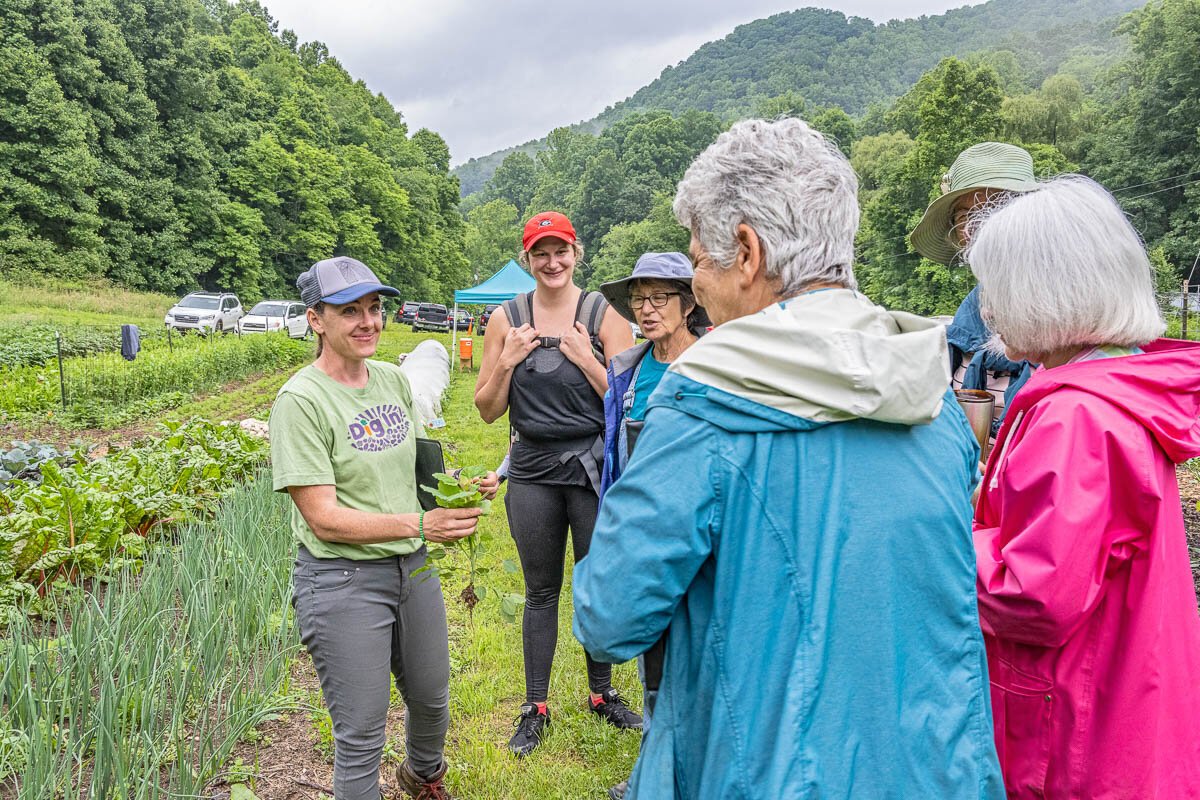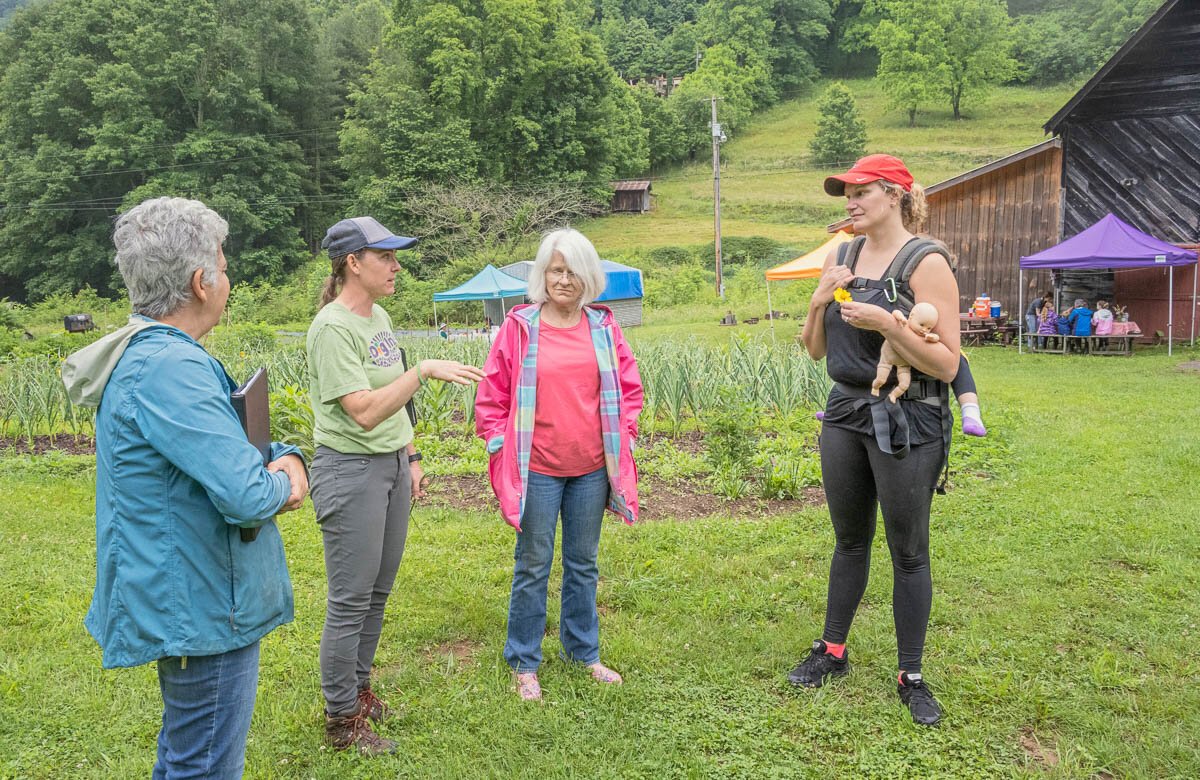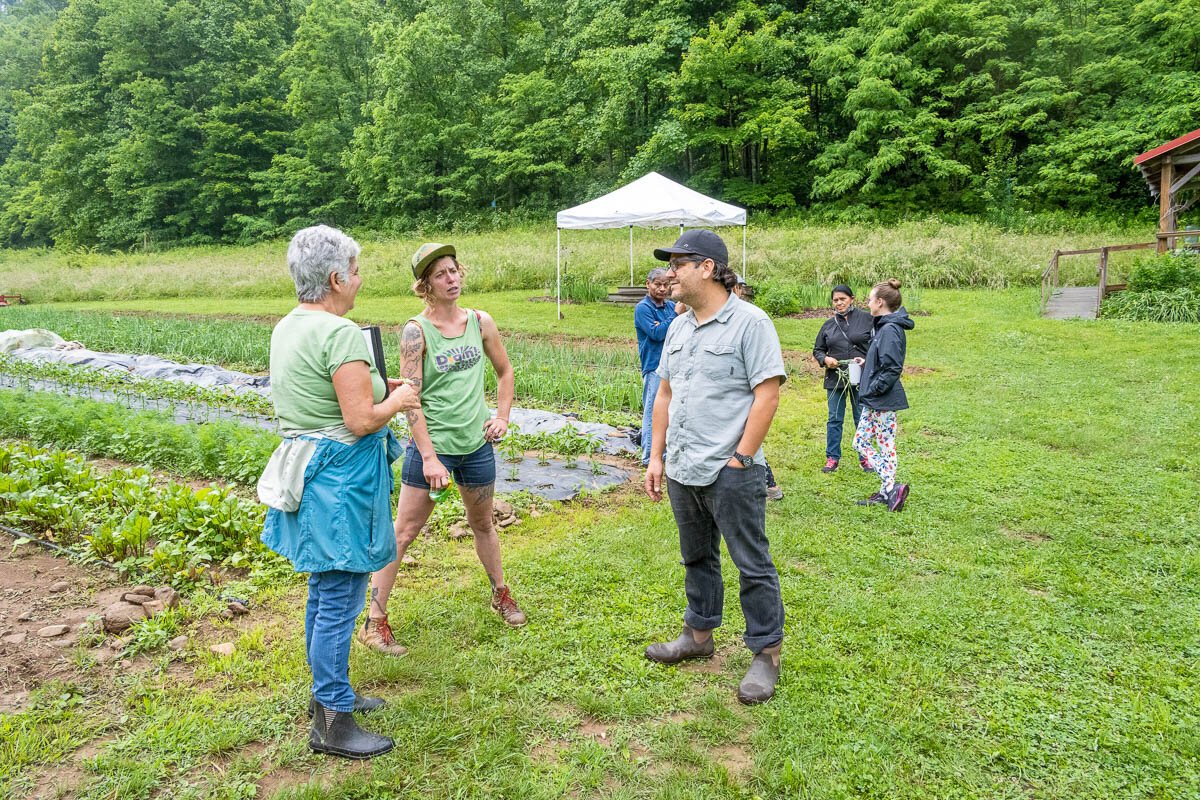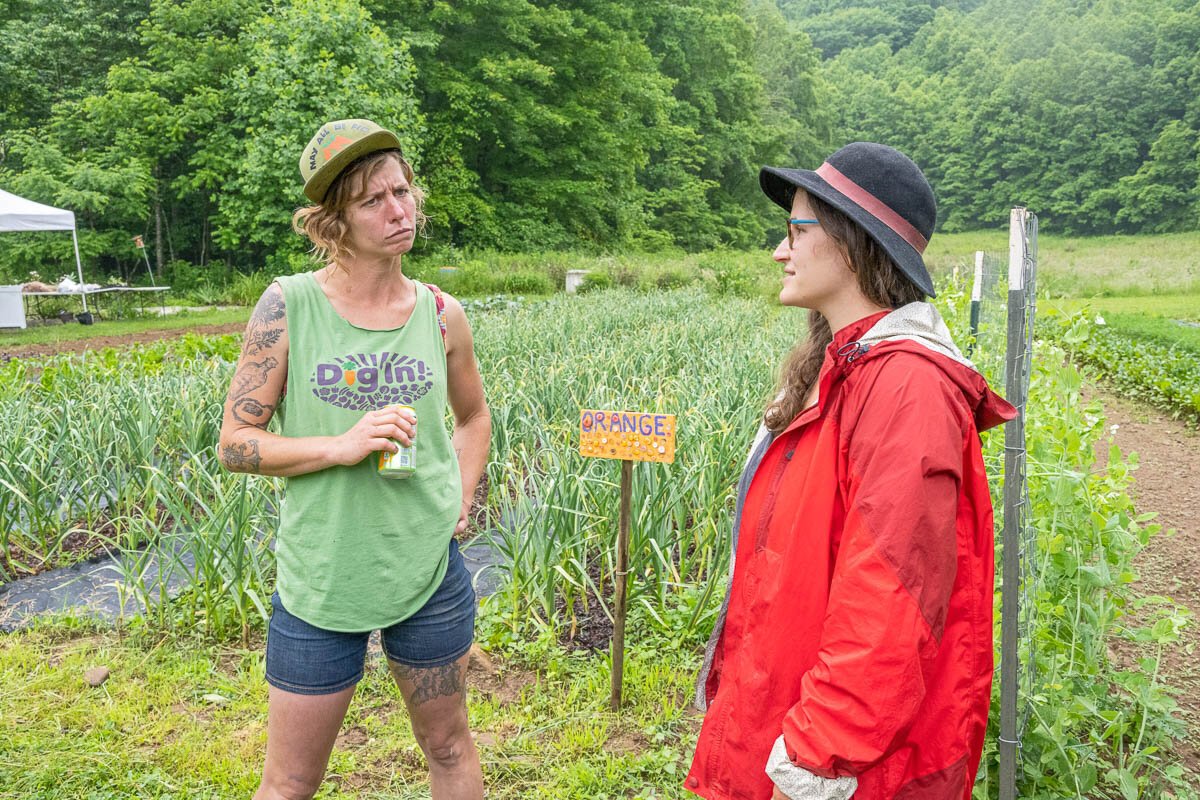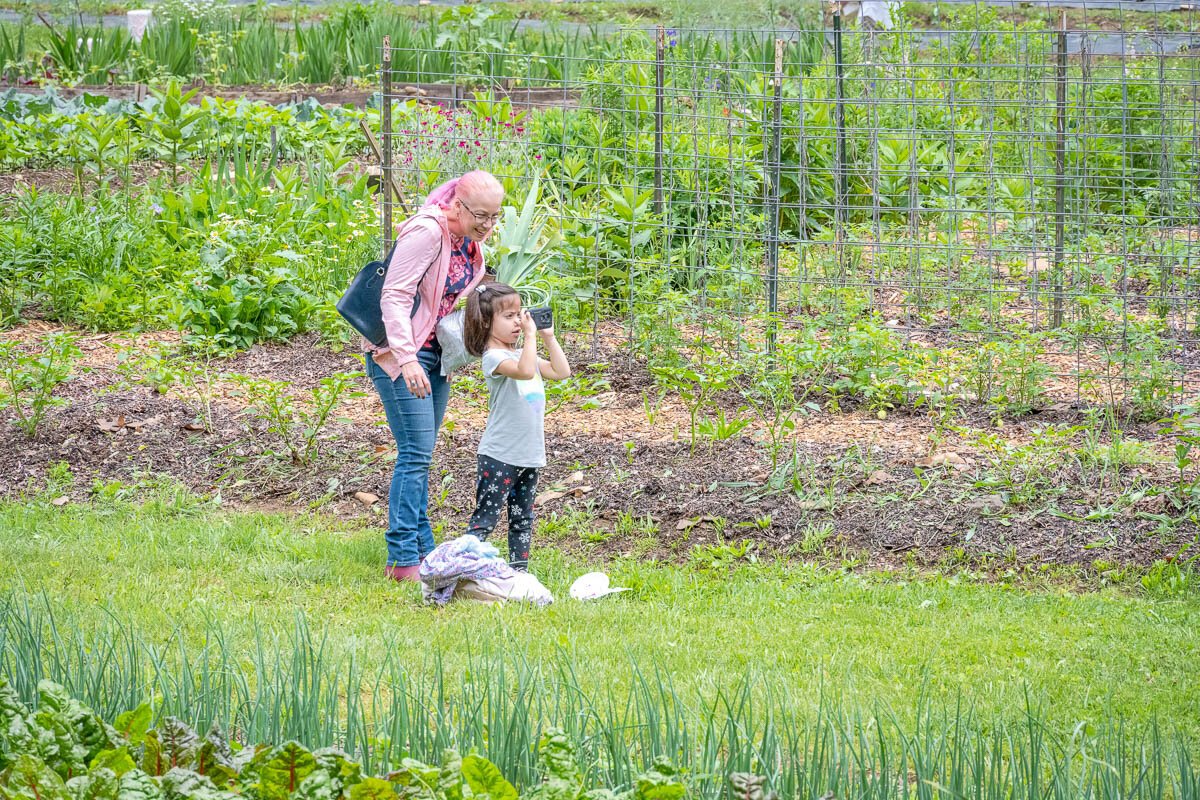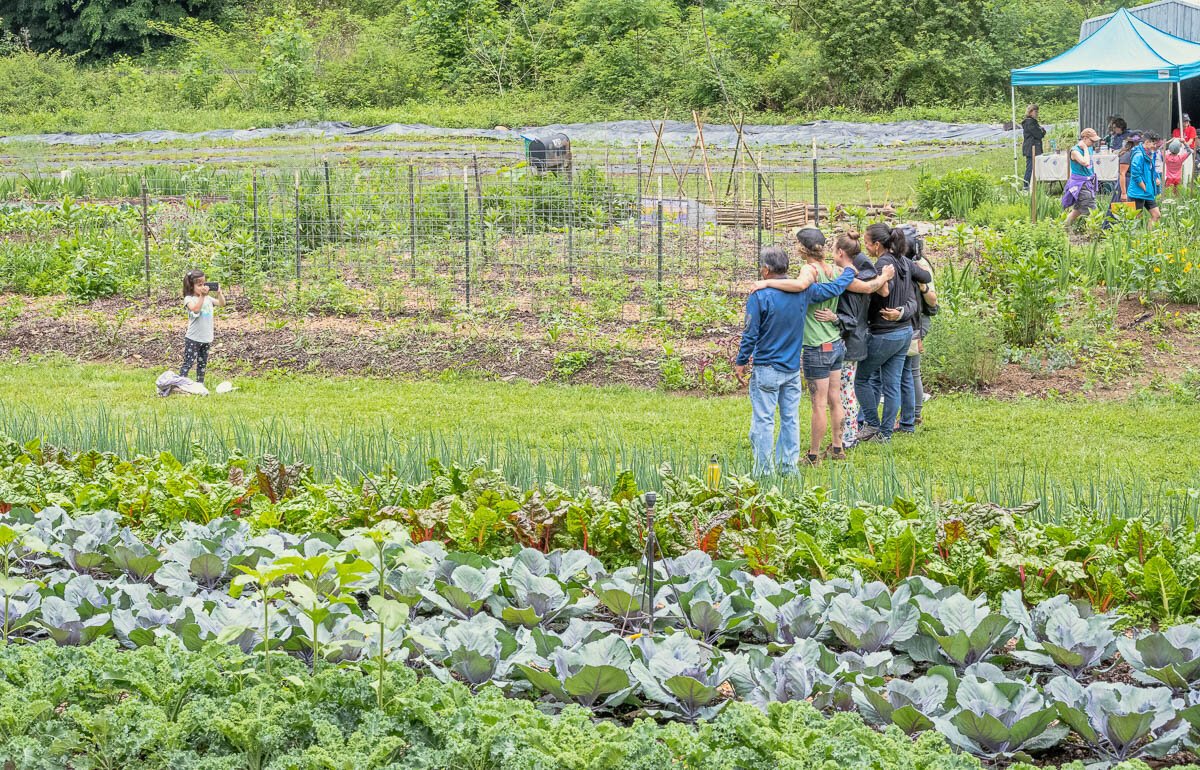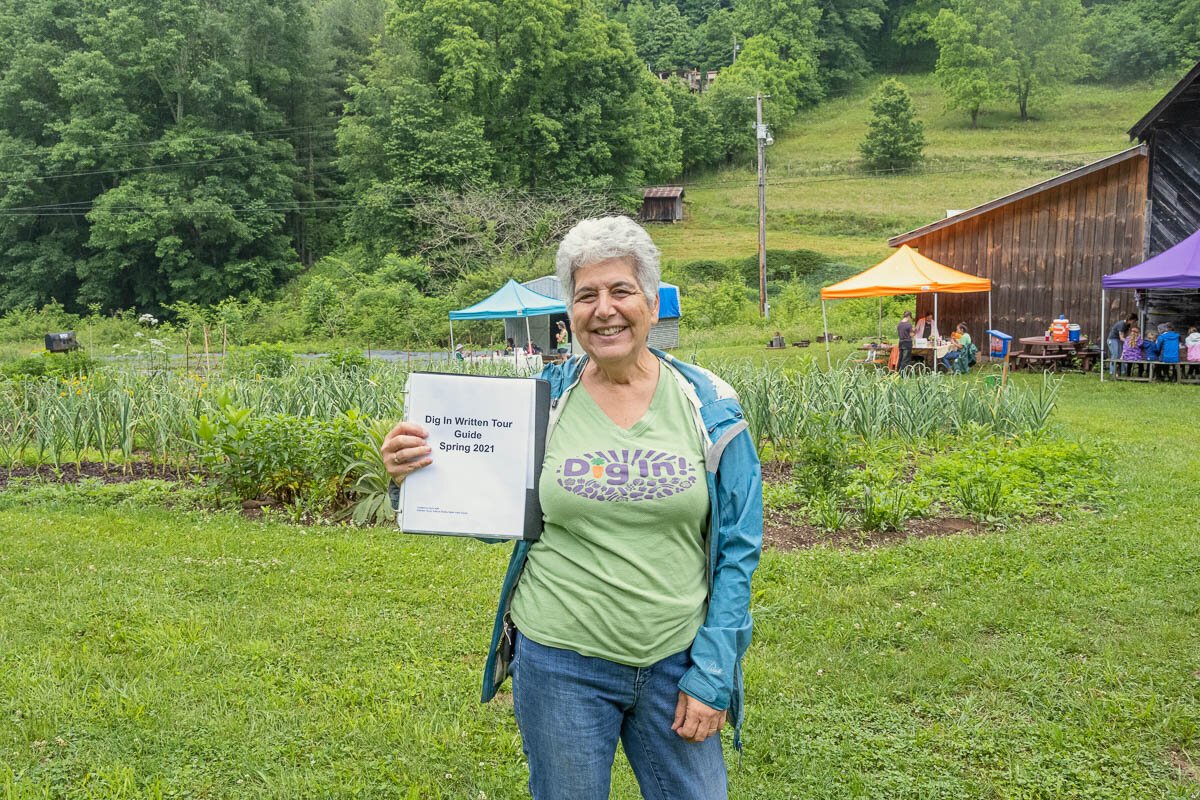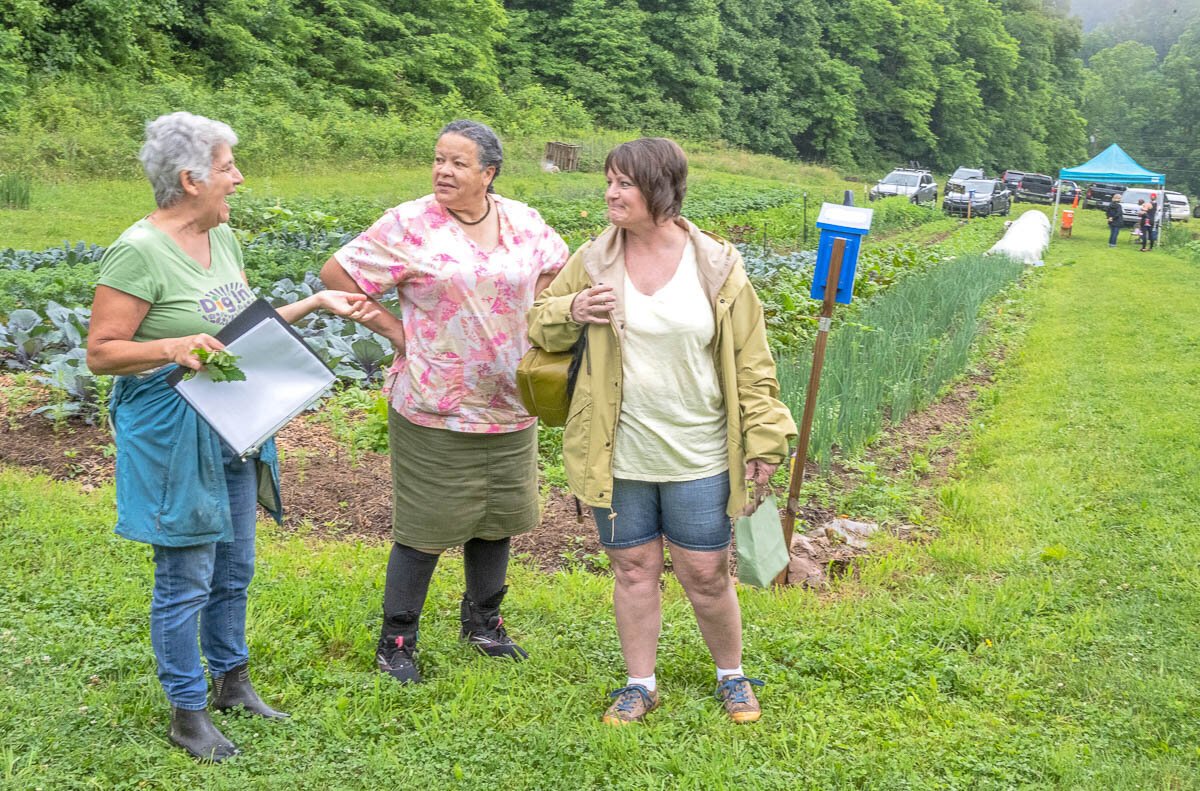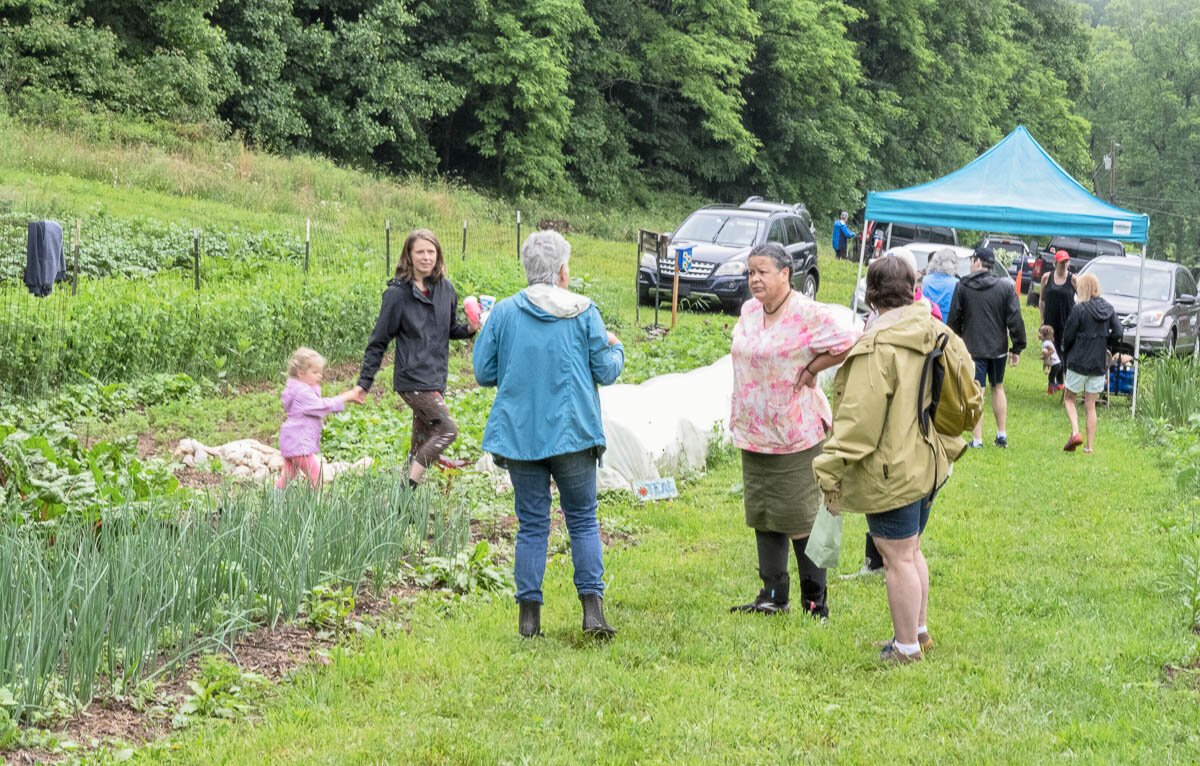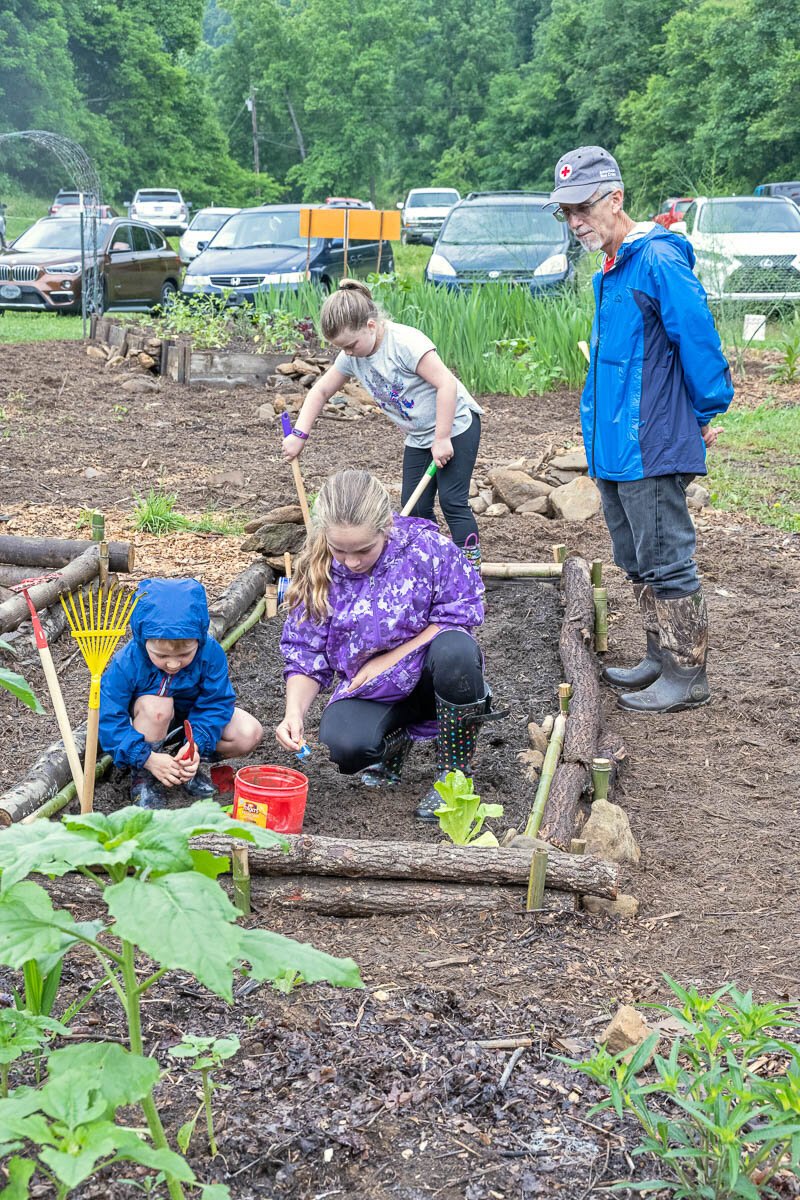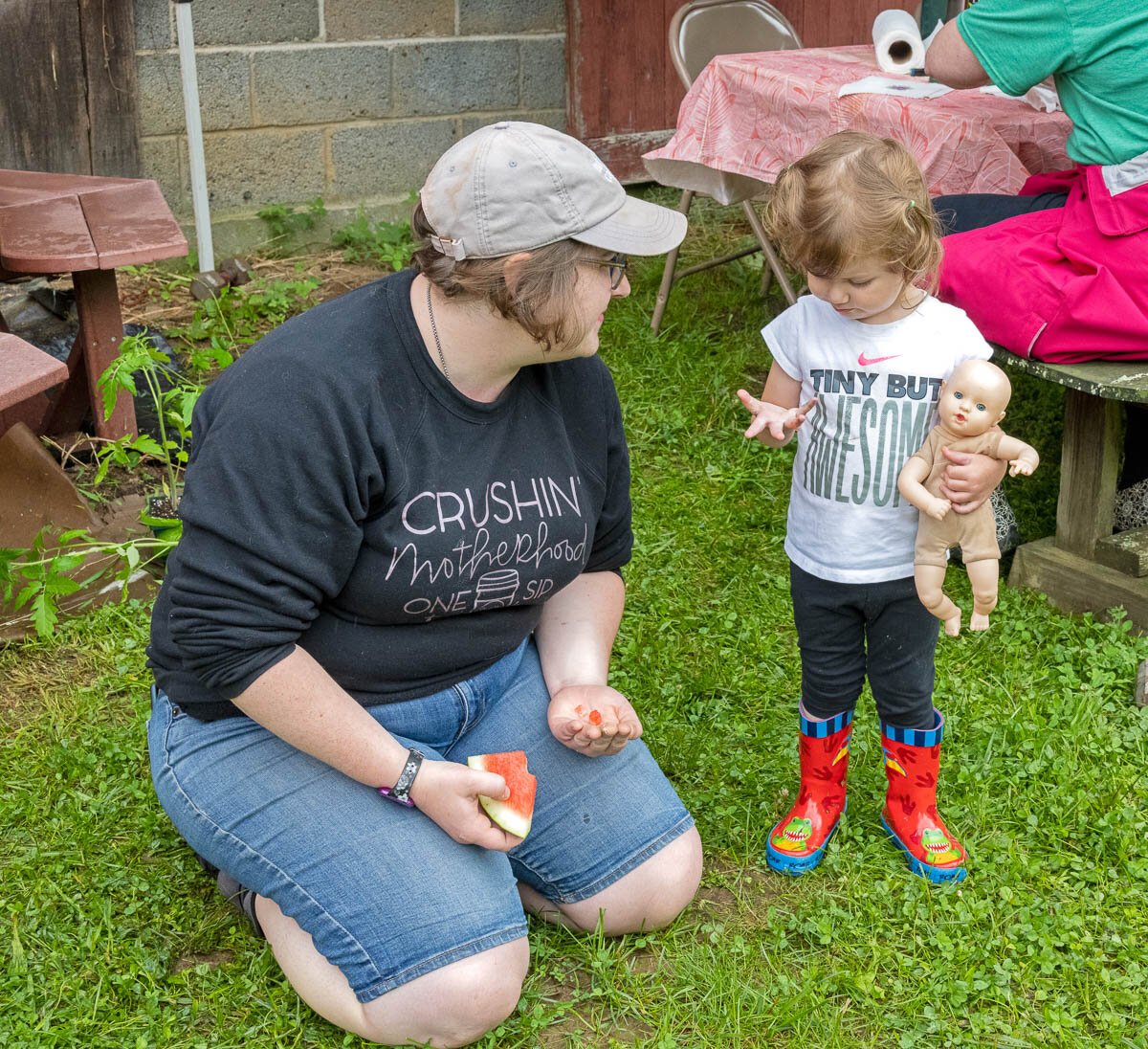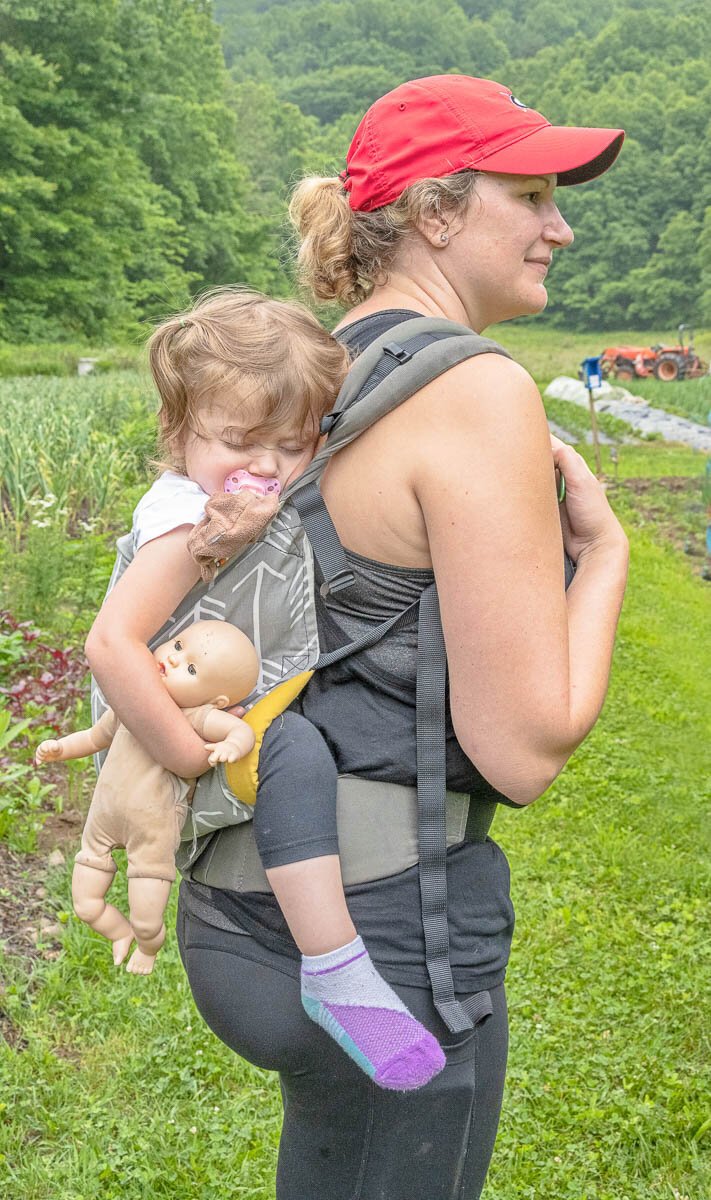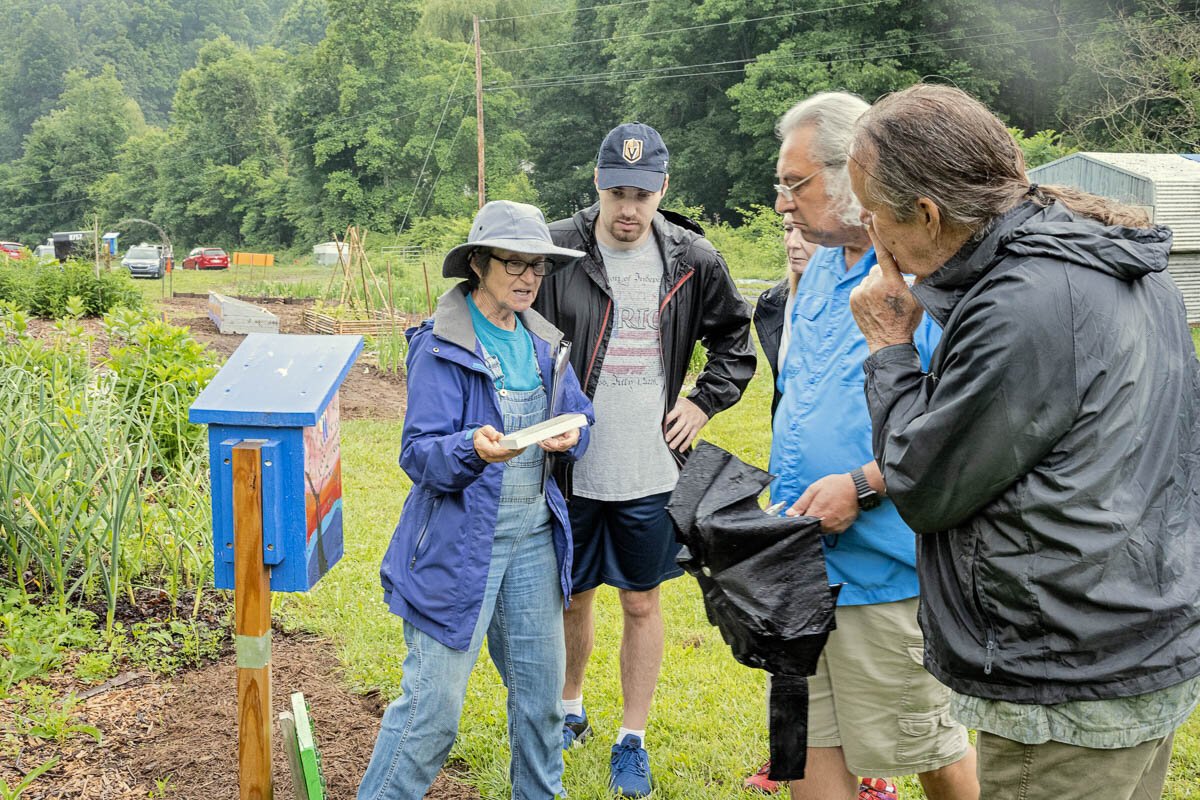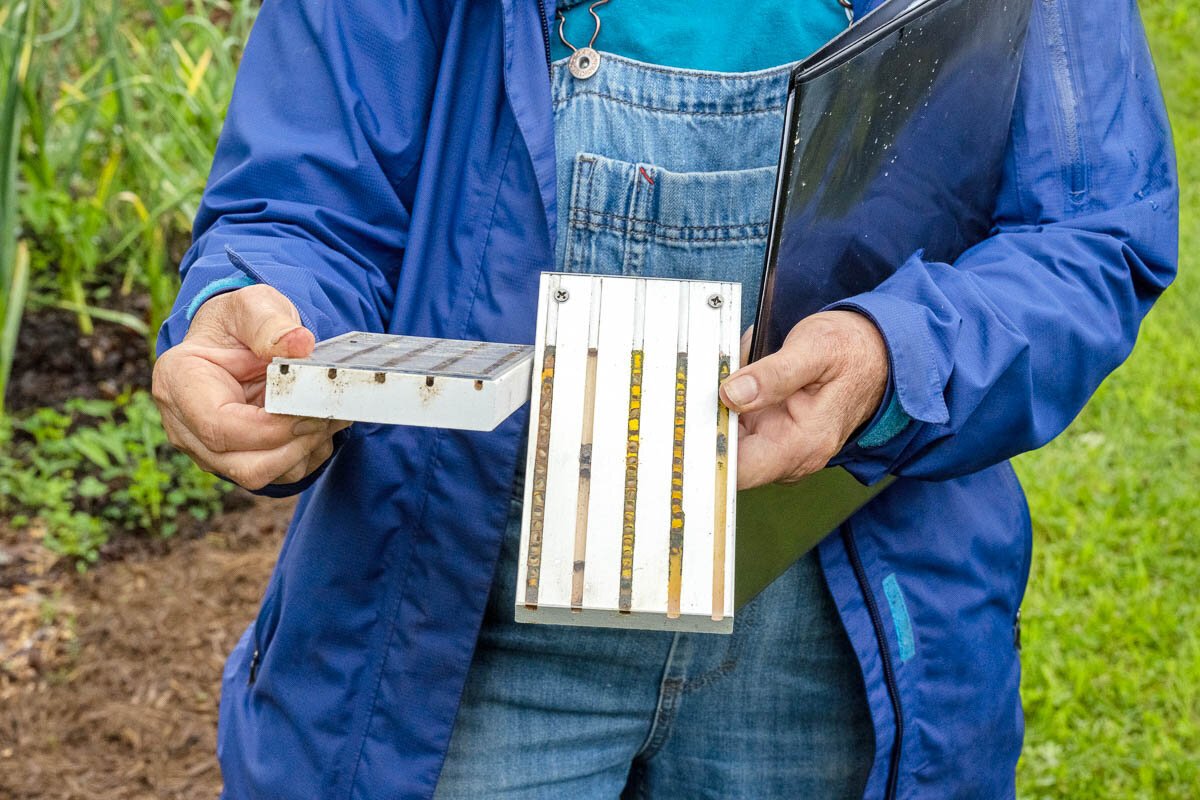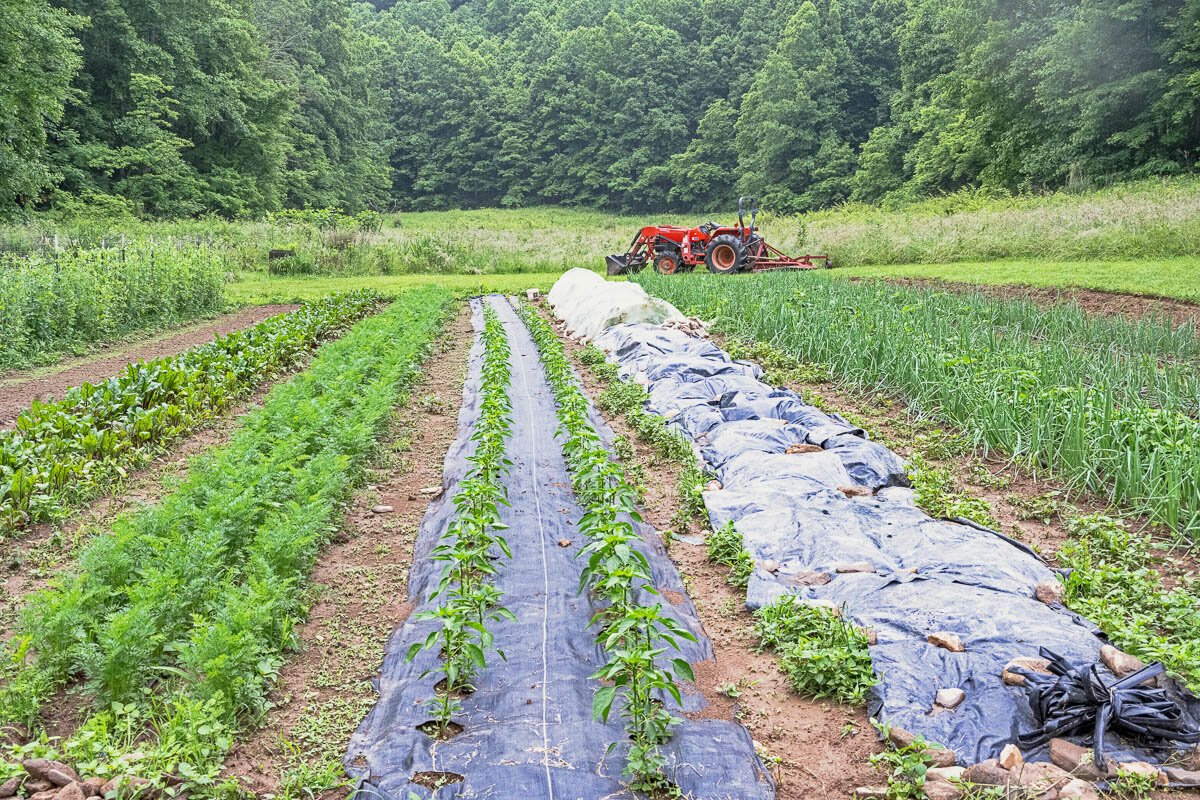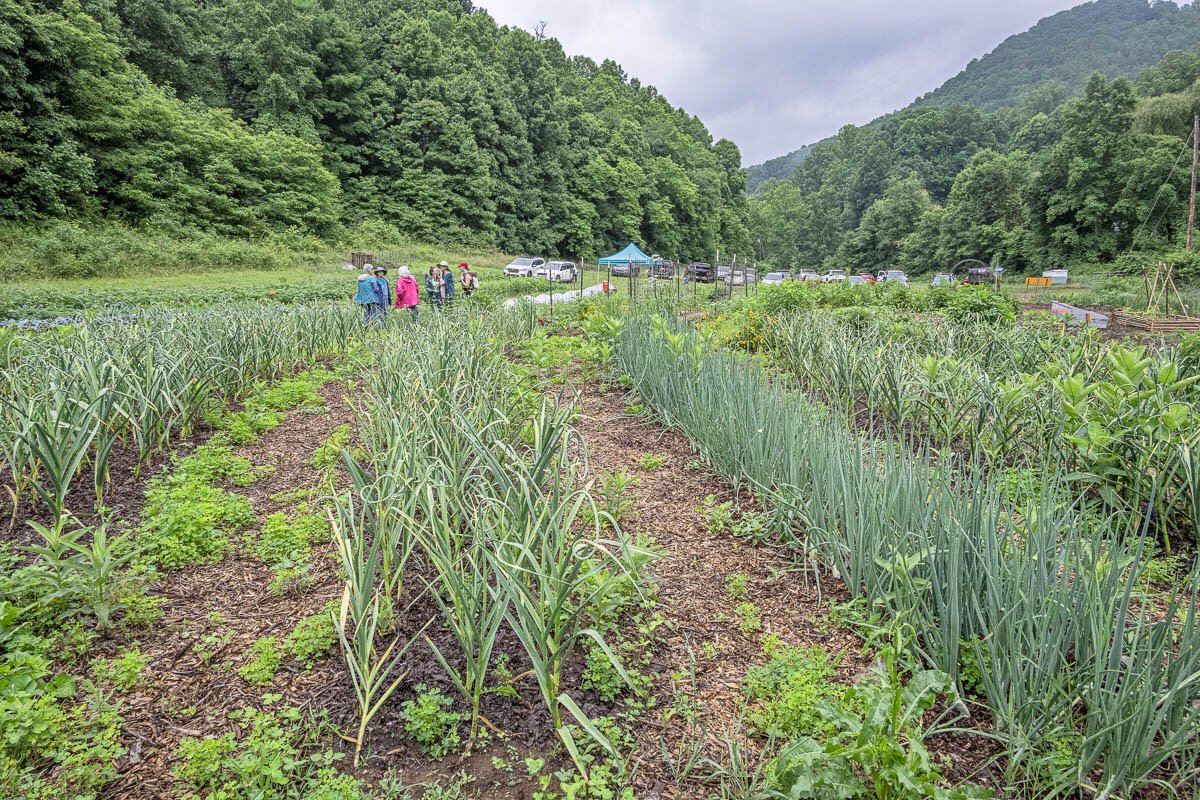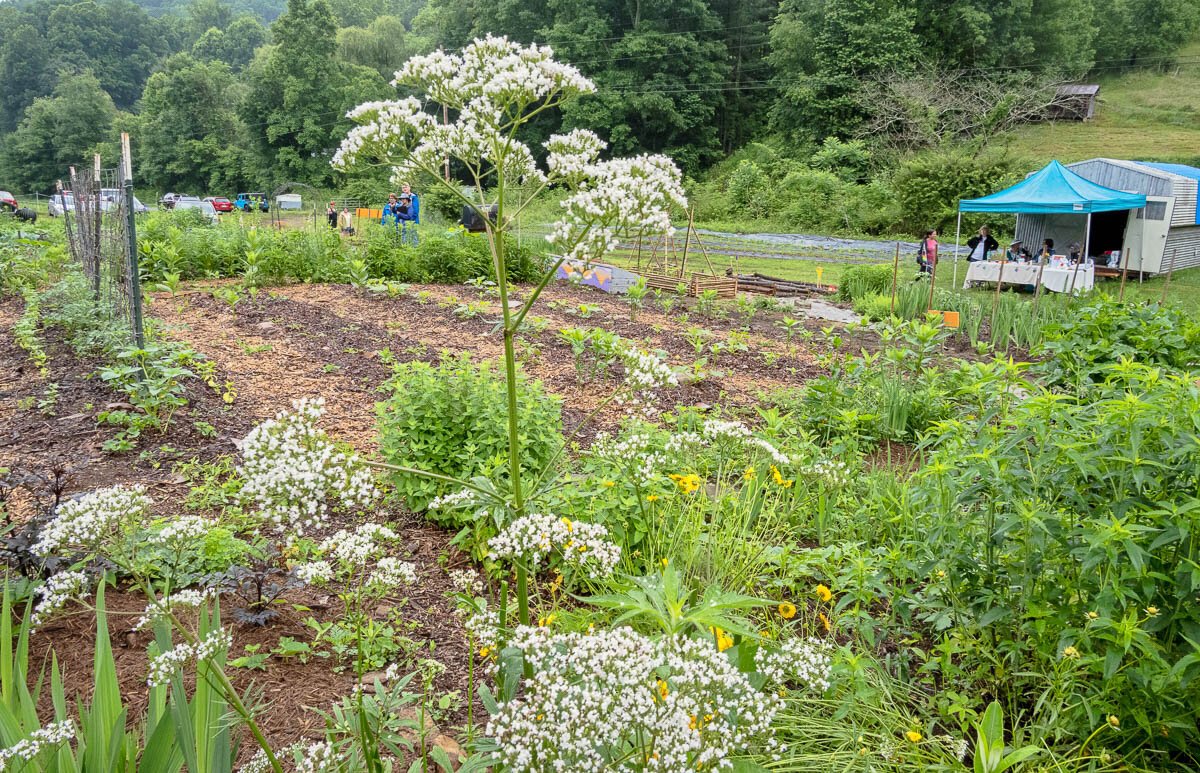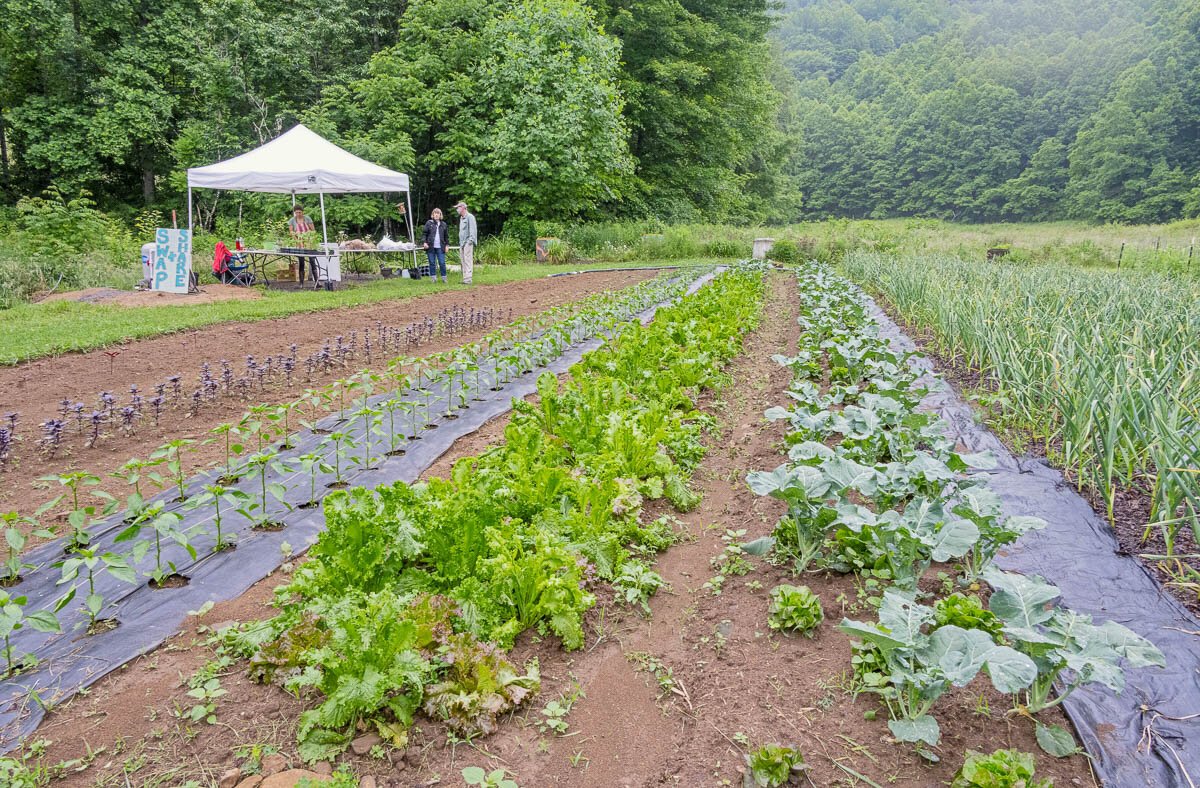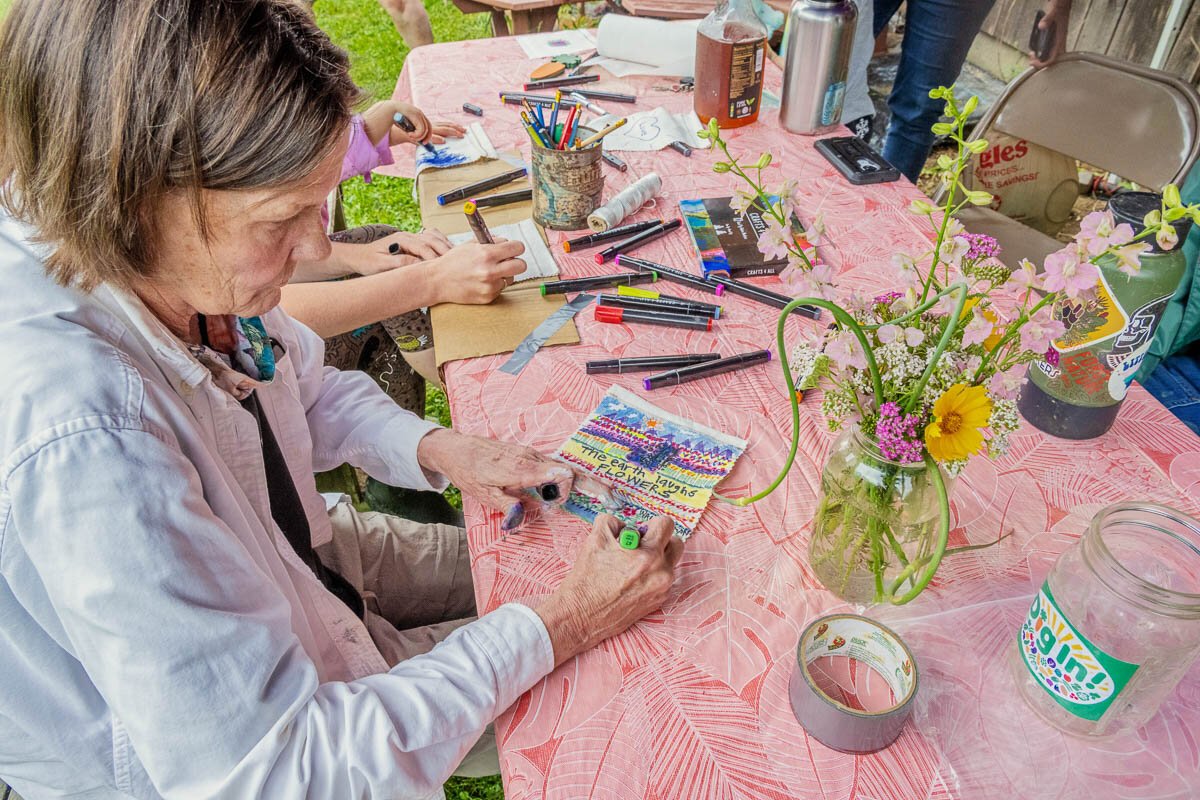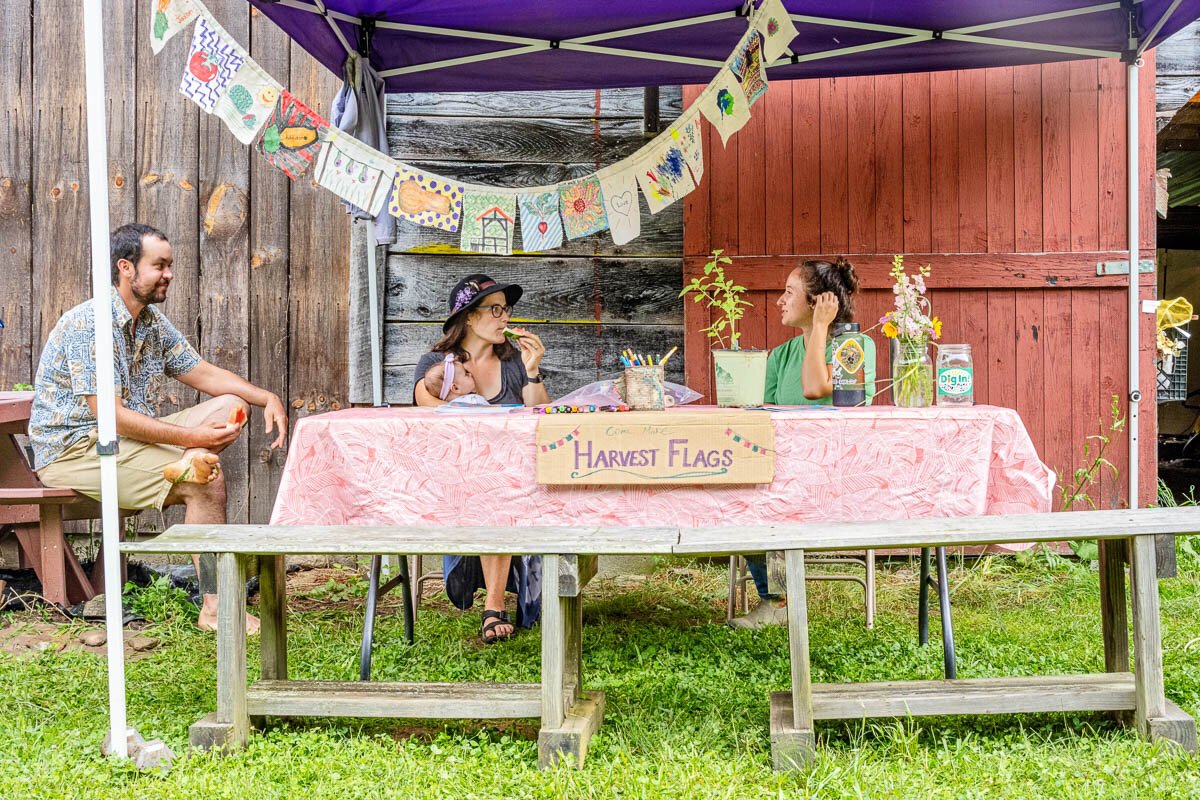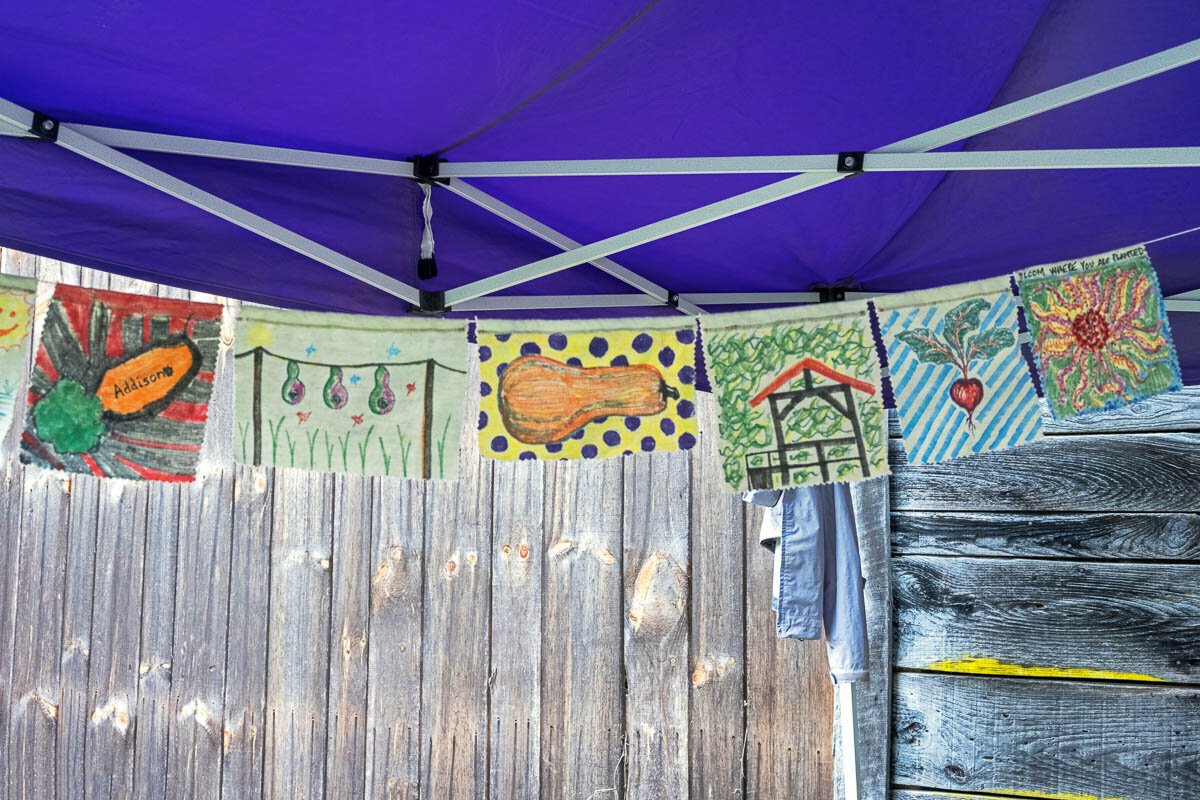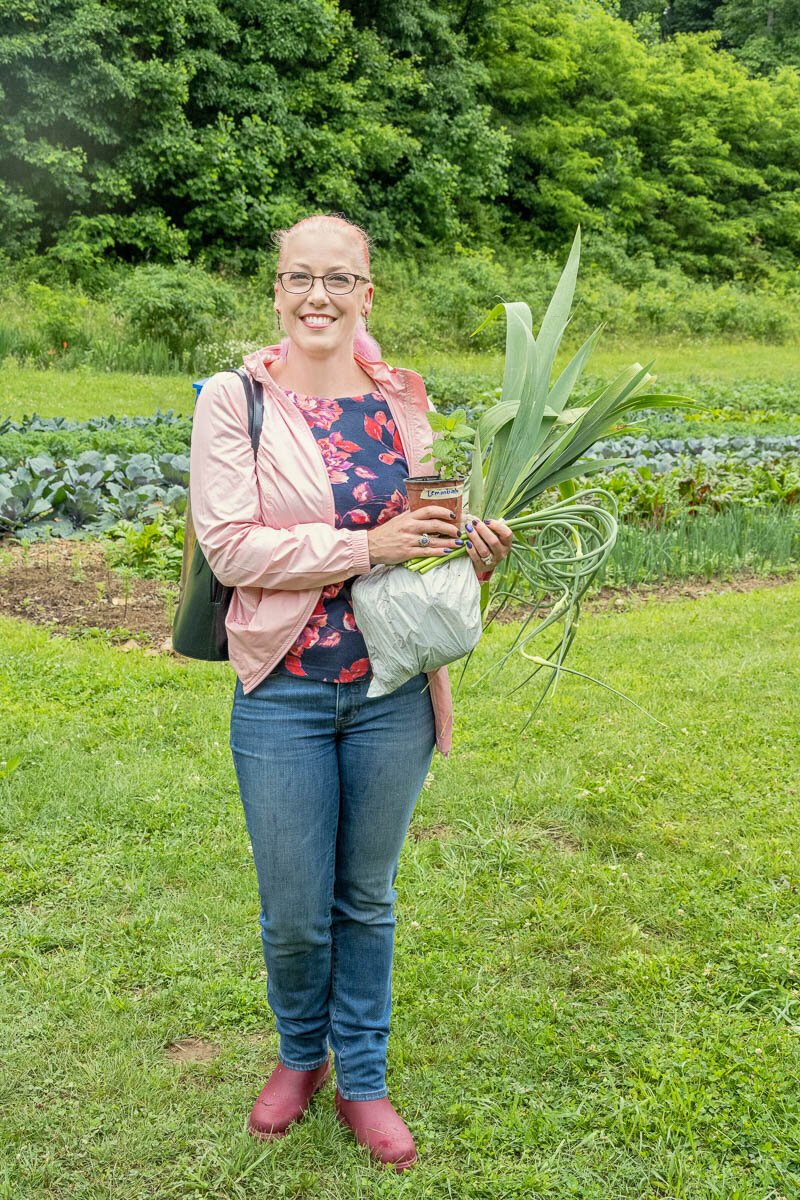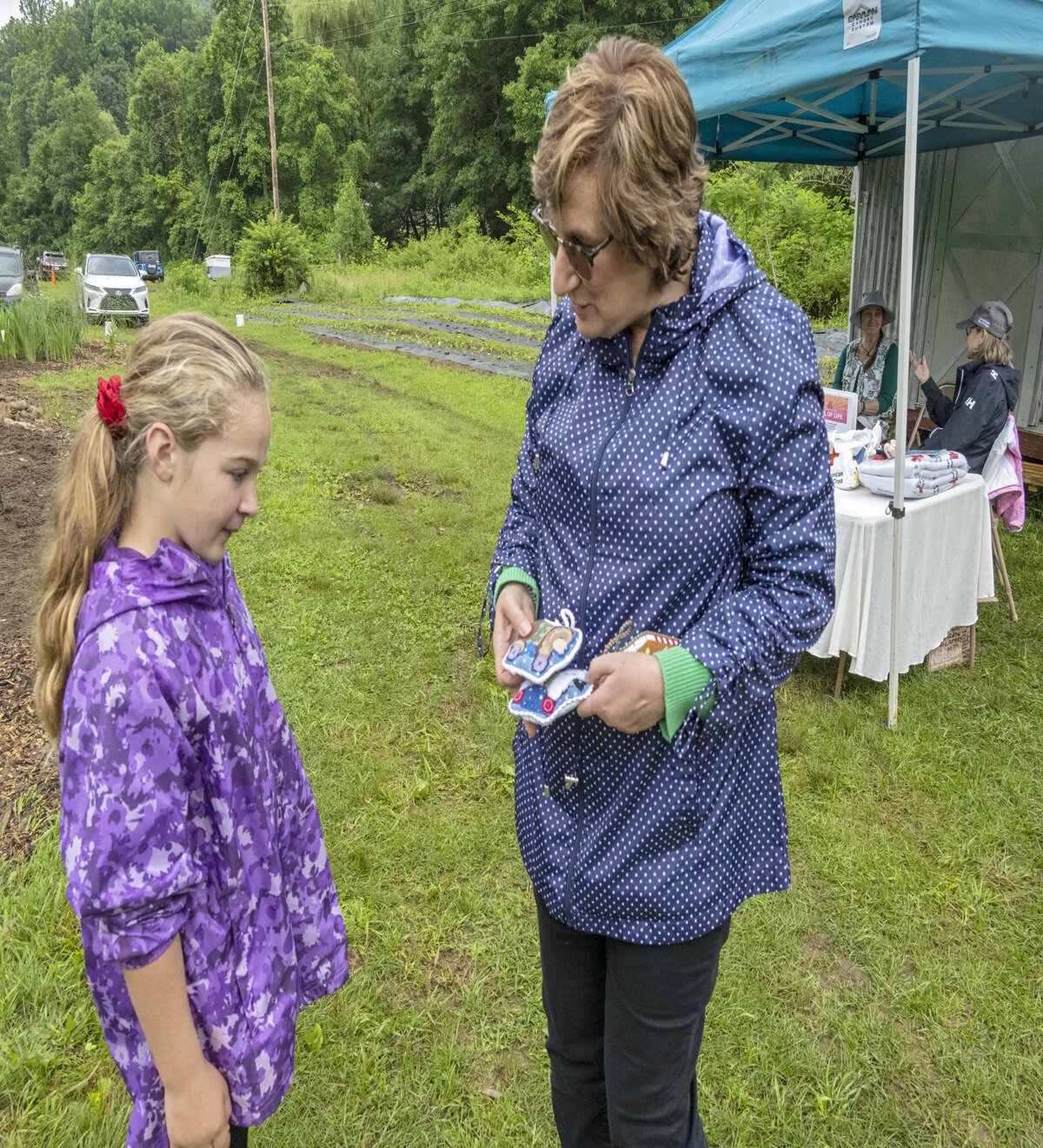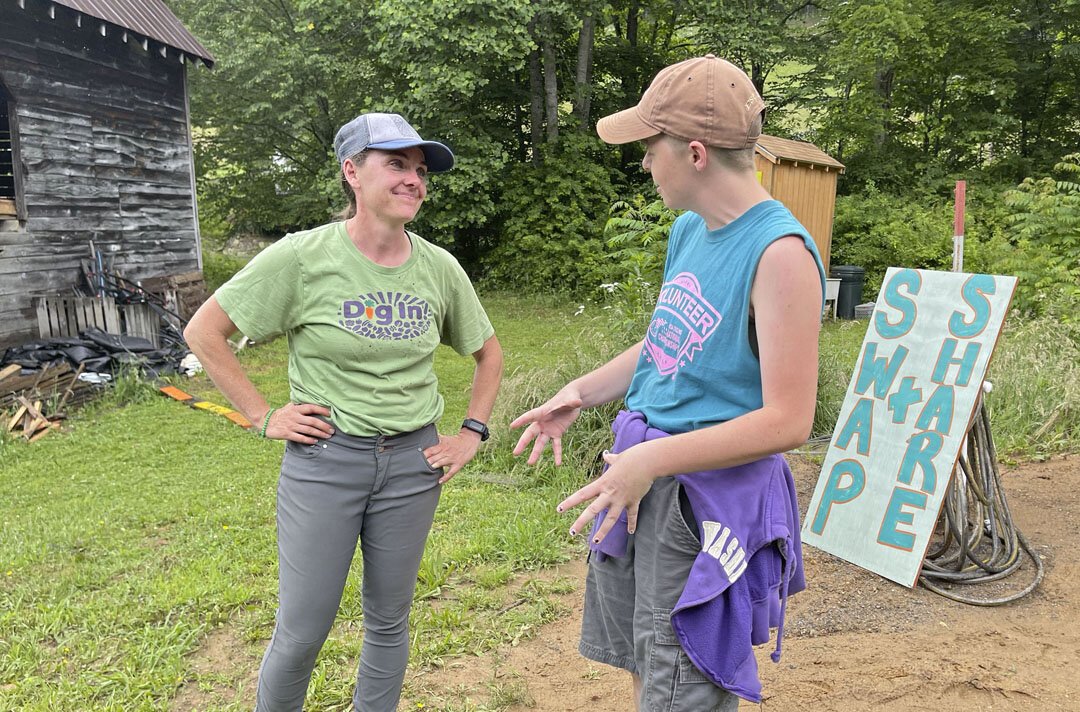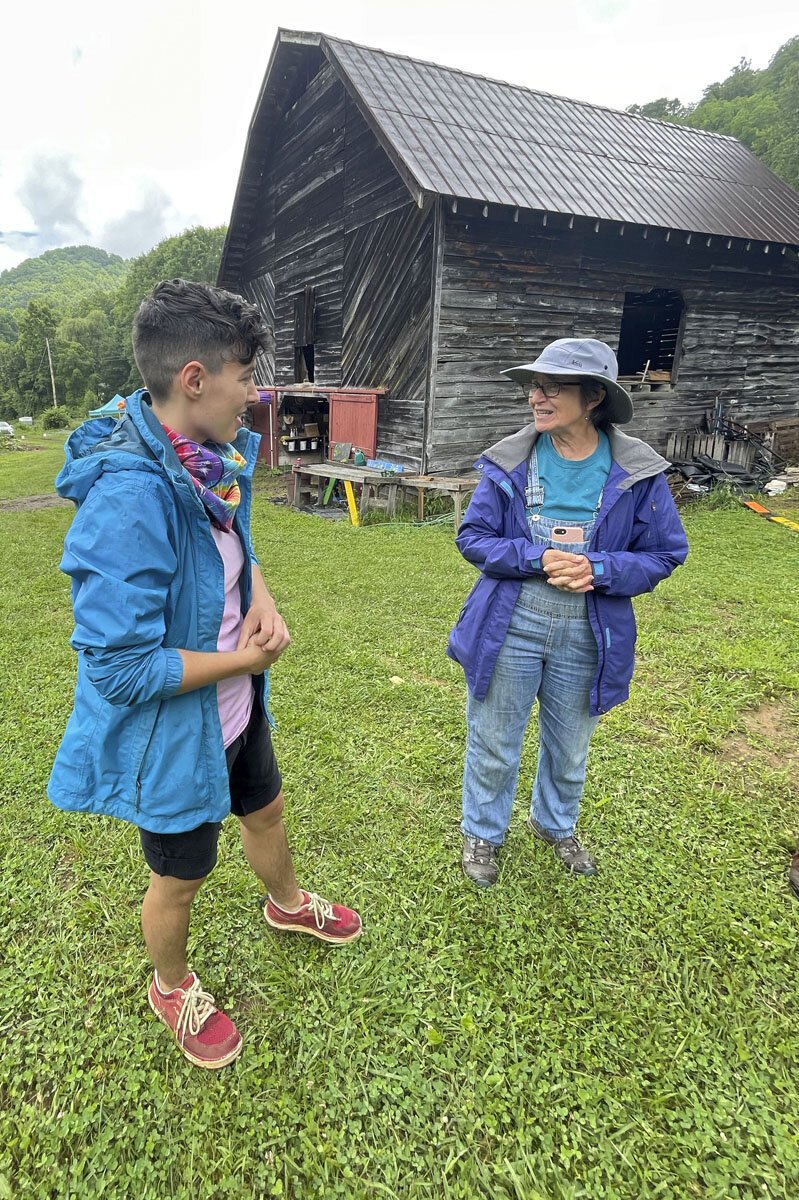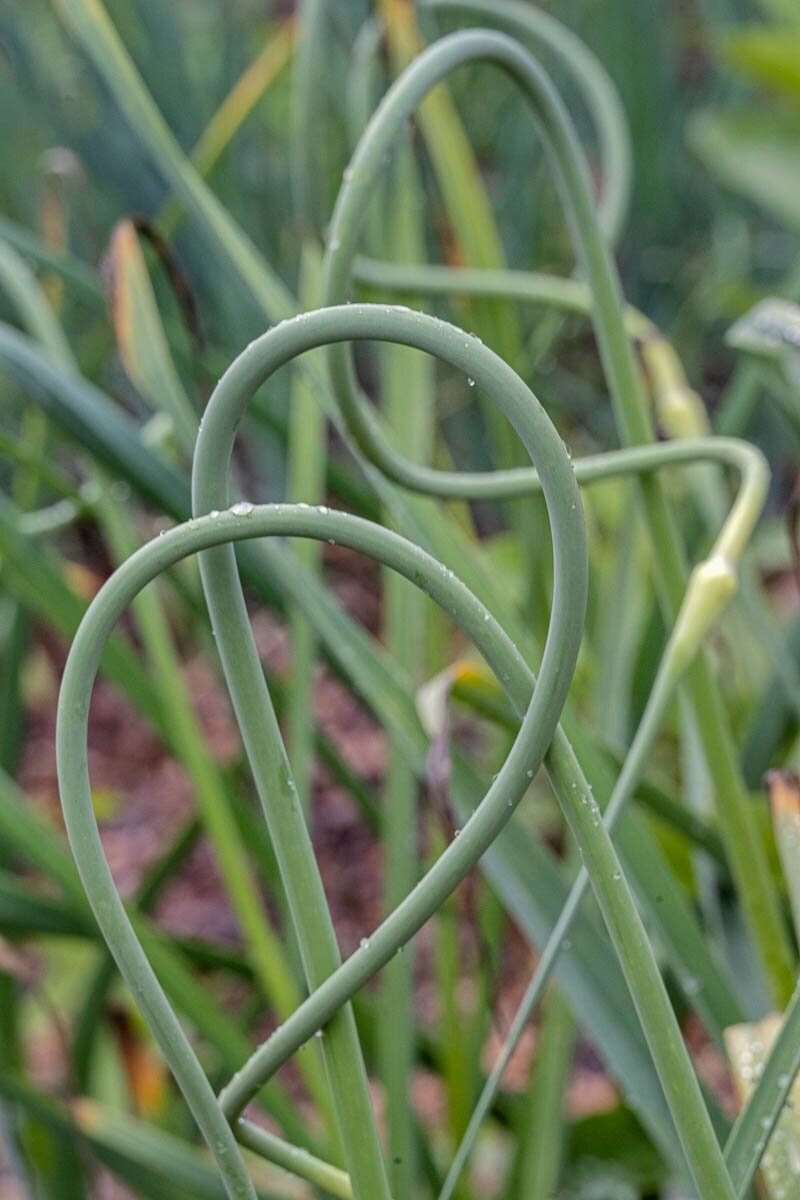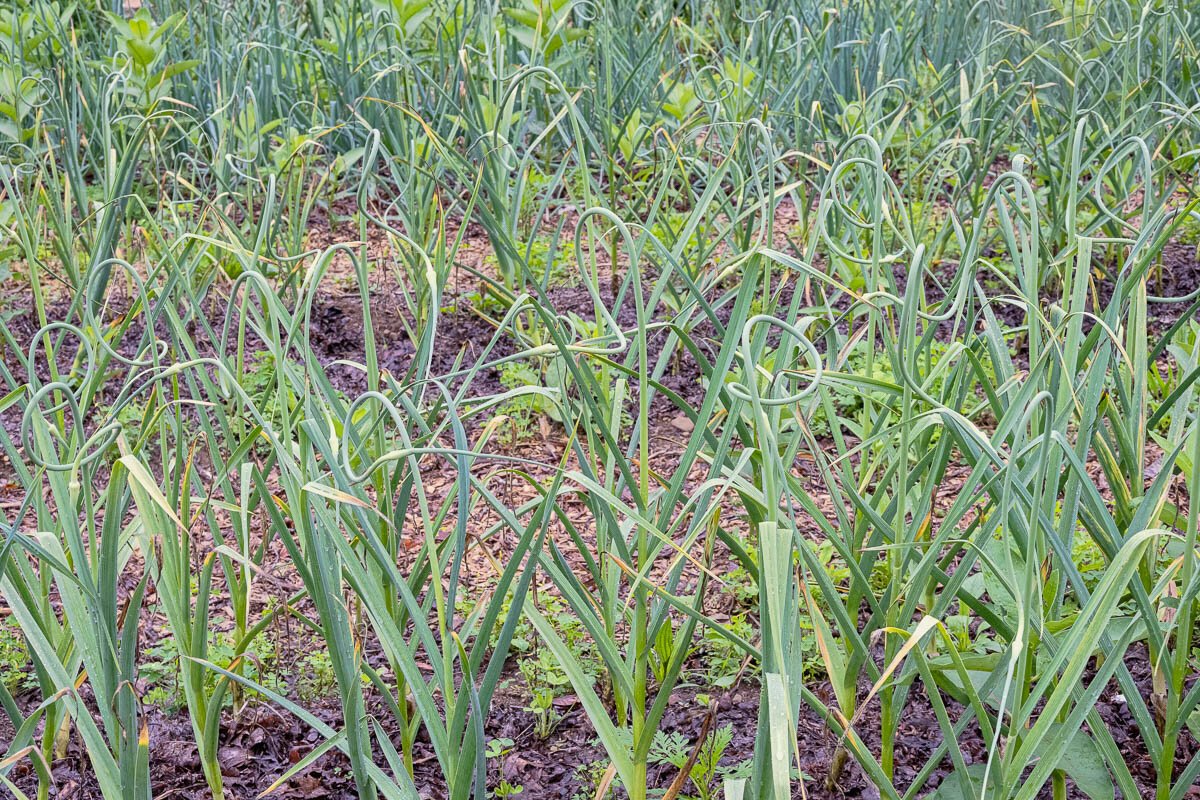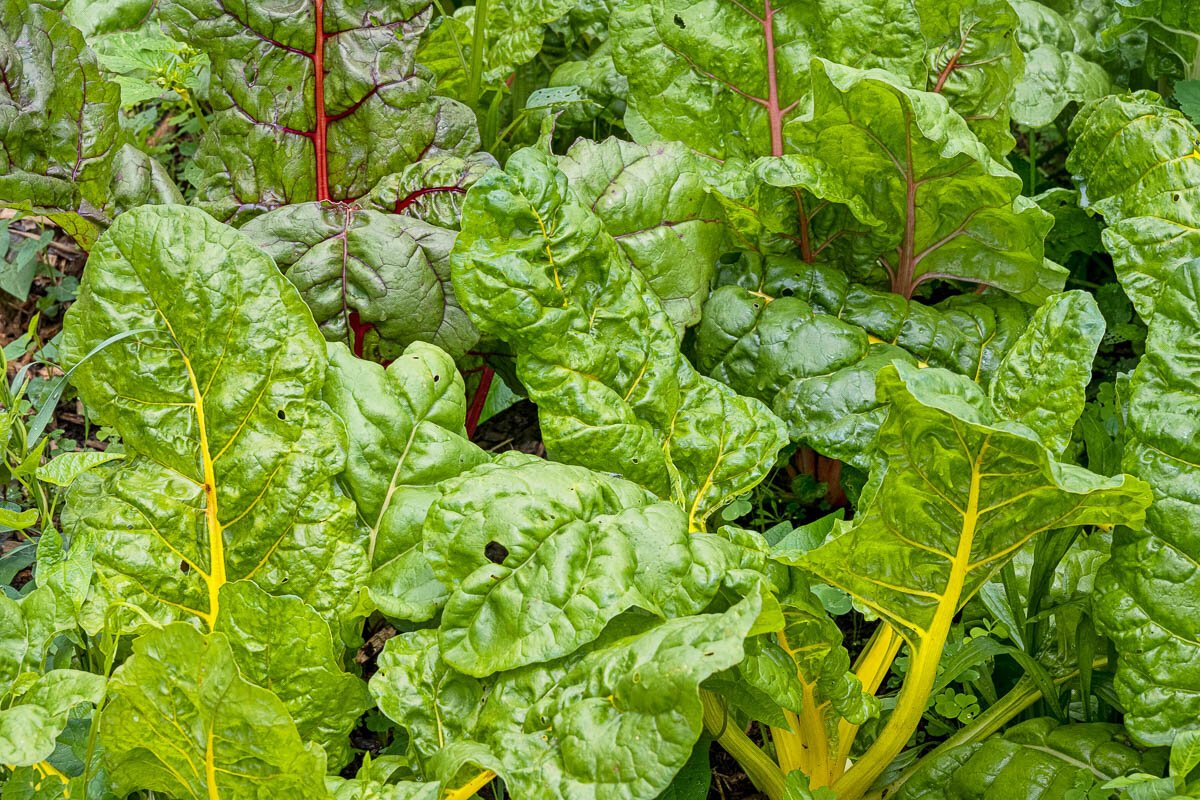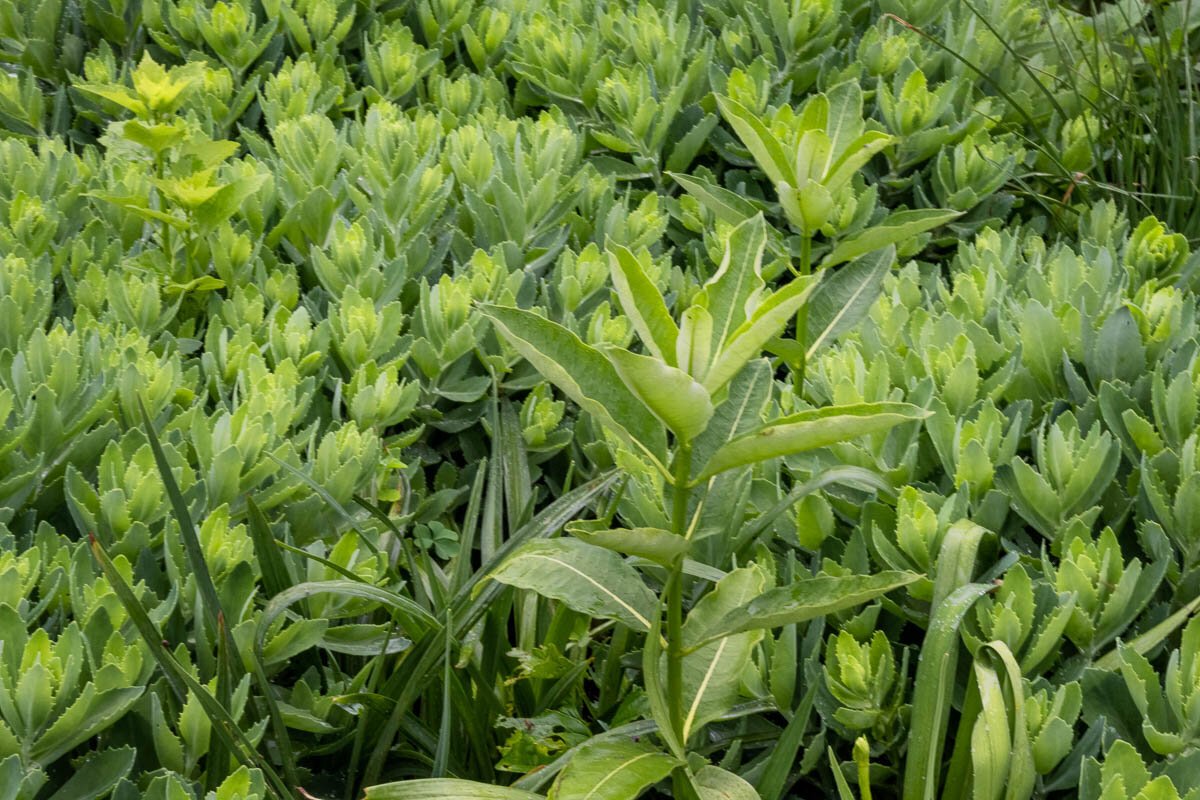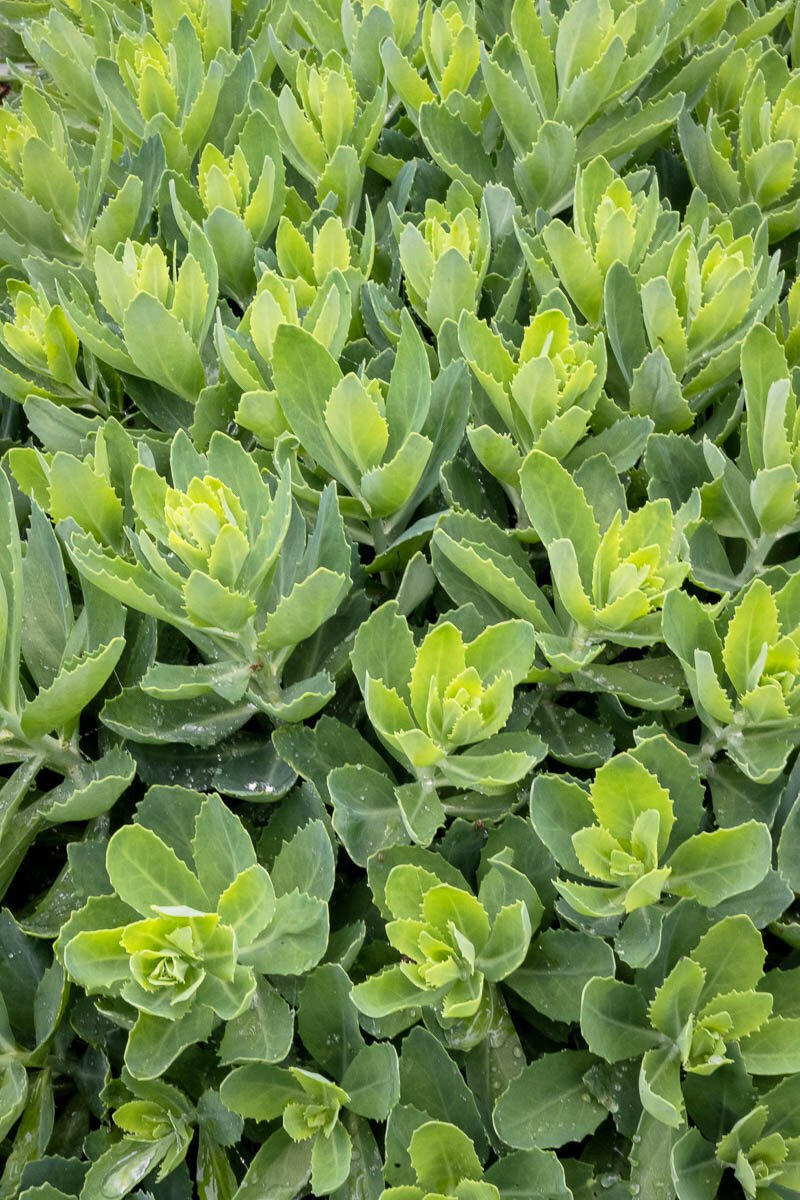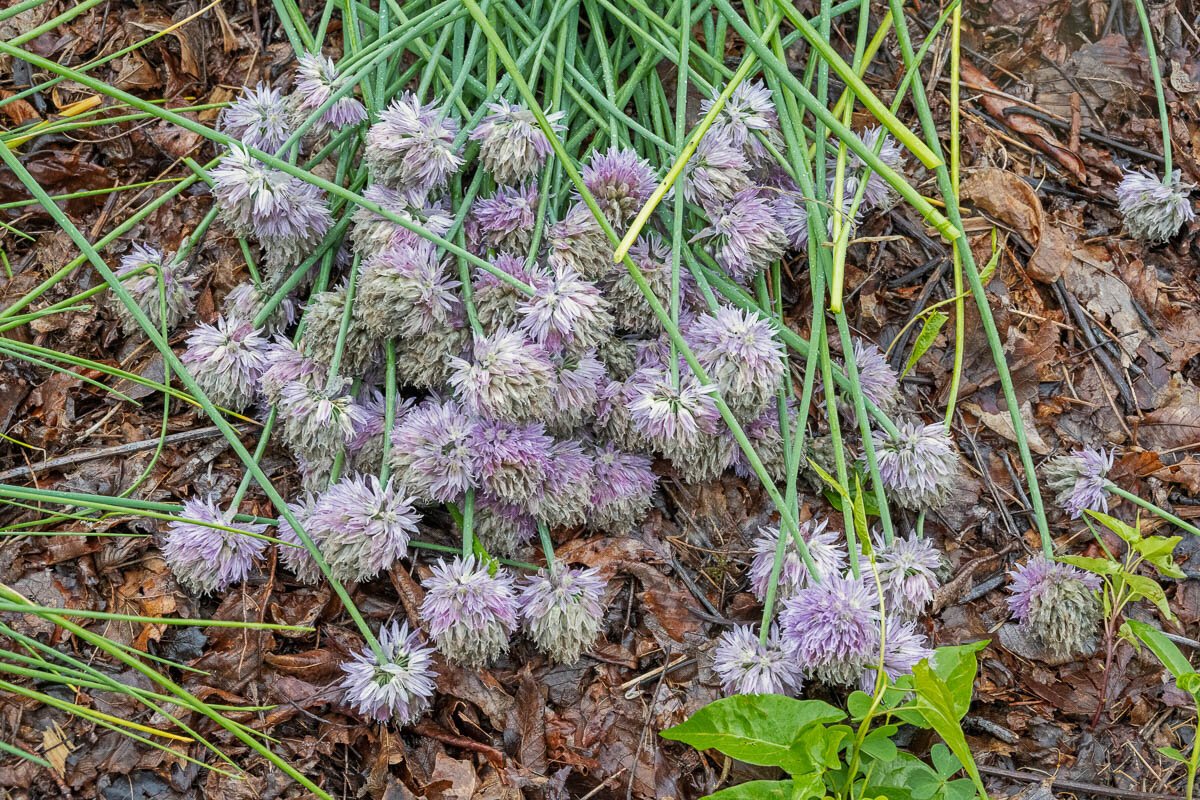Dig In, a Paradigm for How to Live Together as a Community and Share Resources
My work on water and climate change issues led me to develop an interest in sustainable farming. In 2019, I attended the annual Society for Environmental Journalism Conference, where I learned how farms and even grasslands for livestock serve as important carbon sinks in mitigating climate change. A lifelong interest in health, my own and that of the planet, of course drew me to organic and sustainable farming. The purer our food is, the fewer toxins we ingest; and the less fertilizer we use, the better it is for our waterways. Though the idea for a farming project had been percolating in my mind for some time, I always found myself off chasing melting icebergs and sea ice or disappearing islands in the Sundarbans. The pandemic and being involved in the care of an aging parent with congestive heart failure changed everything and caused me to stay closer to home.
When I mentioned my desire to learn more about farming to my good friend Richard Martin, formerly of Sarasota and a fellow New College Alum now living in the High Cove Community in Bakersville, he pointed me to Dig In, a non-profit group with the mission “to build and maintain a community garden that feeds Yancey County and empowers people to grow their own healthy foods.” After doing some research, I decided to follow this community farm for a growing season, and already the experience has been incredibly rewarding. Each time I visit and see vegetables flourishing and life carrying on in such an healthy and balanced way, my spirits are lifted–especially as I watch my own mother fading. And though I first thought that the farming methods and vegetables were the focus, I am coming to see that the communal bonds that exist within this community of volunteers are equally if not more important and that this can be a paradigm for a new way of living in the world.
Kathleen Wood is the Executive Director and has been with Dig In for seven seasons. Kathleen was selected as a Bill Emerson Hunger Fellow with the Congressional Hunger System. Some of her other accomplishments include working on the 2008 farm bill as a political advocate, learning community organizing on a campaign directed by the Coalition of Immokalee Workers (a situation I am familiar with as a former Florida resident), laboring on vegetable and seed farms in Colorado and Oregon, and working with small farmers in Honduras growing beans and corn for a national seed breeding project while on a Fulbright Scholarship. She also earned an MS in Rural Sociology and Natural Resource Management. Kathleen is a powerhouse with a soft voice and great compassion for other people and all living things. When I told her how hard it is to watch my mother in this last season of life, she said she is considering adding a grieving garden for all who have lost loved ones to Covid or other causes this past year. The idea of a grieving garden in a place that brings such glorious new life into the world seems perfect. It would complete the cycle of life here.
Kathryn Skelley-Watts, a graduate of Warren Wilson College and the tractor boss and garden manager while she was there, is the farm manager for Dig In. After school, Kathryn had her own organic farm for ten years, but climate change and extreme rain events that caused extensive flooding in the area eventually made her land unsuitable and she had to stop farming it. She understands the perils of growing crops in a changing environment firsthand, but she also knows the language of plants better than anyone I’ve ever met and knows how to read their signs and respond to their needs. Her connection goes beyond what she learned in school and is highly intuitive and connected. In the photo on the left she is shown talking to a member of the Great Harvest Coop, a group from Hendersonville County that is hoping to level the field for LatinX farmers. In the one on the right, she is talking to Olivia Saunders, who was an assistant farmer under Kathryn before she started Soil Shine Farm and Ferments. After marrying her husband Rocky, they became the farmers for Camp Celo. They make sauerkraut, Kimchi and pickles from their crops and recently gave birth to daughter August.
The farming group from Hendersonville was so grateful to Kathryn for sharing her expertise that they had a young child they brought with them take a photograph of them all together on their way out. When I saw this from the gazebo where I was standing talking to someone else, I knew Dig In could be a model not only for their community but for communities across Western North Carolina and the country. Like a rhizome, their model can reach far and wide and bring about the change we so desperately need to live with more awareness and compassion and in greater harmony with the environment.
Since the founding of the non profit organization in 2010, they have grown to reach over 500 families through food programs and pantries, educational activities, and Harvest Table, which provides fresh fruit and vegetables to food insecure families and hunger relief agencies in Yancey County. Opening the garden for this spring tour is one way they reach people in the community and beyond. They love sharing their knowledge, since they believe encouraging more people to grow their own food is empowering and good for the environment. Fran Giardina is shown holding the notebook and greeting visitors in the photos below.
I was going to wait to write a post until further along in the growing season, but this spring tour seemed like the perfect time to introduce you to this amazing group of people and the important work they are doing. It was heartening to see so many children participating and learning about healthy eating, farming, and even counting, which comes in handy when planting seeds. The mother of the child counting is Katrina George, a board member. And of course what better place is there to nap then on your mother’s back in the outdoors. The mother of the sleeping child is Julie Kirk, another board member and middle school teacher who is helping to enhance a touch and smell garden at the Seeds of Hope community garden sponsored by the Baptist Church, another place I will be visiting. Julie has a 40 foot raised bed garden at her home that her paraplegic husband tends.
In order to grow the healthiest crops, the farmers at Dig In want to attract as many pollinators as possible. In the photos below, Linda Flagler is explaining how the beautifully painted pollinator boxes have different sized holes to accommodate various insects. The volunteers with Dig In grow flowers too, which also attract pollinators. Though their non-profit status is for the vegetable growing side of their organization so those can’t be sold, they are able to sell cut flowers through a CSA to raise money for the supplies and equipment they need. There will be a future post about flowers at the farm featuring Pat Thibodeaux, the extraordinary flower gardener who volunteers hundreds of hours each season. She was not there for the spring tour though, so I will wait to share the fruits of her labor until another time.
Below are a few examples of the beds. Tractors are only used in the beginning, to prepare the earth. The beds are no-dig and no-till or tilled by hand and the seeds are planted by hand as well. They use lasagne beds ( a method of building gardens with layers of organic material), companion planting, and other sustainable practices. Weeds are controlled by plastic barriers. Although they are not certified as organic, because it would be too costly and time intensive for them to earn the certification as a nonprofit, they basically employ organic farming methods.
Other activities included making harvest flags for the booth and painting rocks. I loved the saying this one visitor wrote about how the earth laughs in flowers, a very moving quote by Ralph Waldo Emerson. The photograph in the center is of Olivia Saunders and her husband Rocky Ramos catching up with Fel Marquez, a farm apprentice who has been working with family farms and community farms and urban gardens for the past four years. Originally from the Bay Area, she decided to work with Dig In since they give back to the community and the environment in ways that are in keeping with her desire to choose love in a world filled with hate.
I noticed the woman below taking a selfie with her bounty and I asked if I could photograph her too. She said she was taking the selfie to share with her mother, so she could see the beautiful, healthy food this farm grows. She lives in a mountain community nearby, as does Becky Schmidt, the woman holding the ornaments. Becky is on the Board of Directors and is also in charge of the Mountain Air Flowers CSA. A Retired Director of Congressional Affairs, she hand stitches these ornaments to sell at Christmas time to raise money for Dig In.
Kate (shown below talking to Kathryn) and her partner Ollie (in the photograph to the right) were both interns for Goldfinch Gardens (goldfinchgardens.com) and met the farmers from Dig In that way. Kate is now working for Patchwork Urban Farms, an organization that connects people through food and the land it is grown on. They promote organic practices using permaculture and biodynamic principles and there are currently seven productive patches in West Asheville. It was great to see how what is being taught at Dig In is spreading not to just neighboring rural areas but to cities as well.
The sense of community was so uplifting that I barely noticed three hours pass by, but I can’t end this post without sharing some more images of the vegetables these workers and volunteers come together to grow with such attention, love, and awareness. No wonder with each visit I feel my sense of hope growing. This was just a quick post to share the seeds of this project. There are more board members and volunteers, as well as the distribution side of things to cover. I know there will be so much more to see and learn this year as the garden continues to explode with life.
The garlic scapes were fascinating and created such intricate and unusual patterns. They were also delicious when I brought them home and used them in a few meals.
The chard and kale were absolutely gorgeous, with vibrant colors and wonderfully textured leaves.
And these Sedum plants, which later will produce beautiful five-petaled yellow flowers, created mesmerizing tonal patterns from their greenery alone. These plants have water storing leaves.
Who knew that cut chive tops could be so beautiful, after the’ve been left laying on the ground? The yellow coreopsis was growing in a cluster on the edge of one of the fields. It is so lovely to see flowers growing side by side with vegetables. There is a synergy that makes both plants and people stronger when diversity is embraced and we live in harmony.
I encourage you to check Dig In out. Here is the link to their organization: https://diginyancey.org. Consider volunteering or making a donation to help them keep growing healthy food through sustainable methods for their neighbors in need. If you become a volunteer, I can assure you that you will make some great friends. If you live far away, think about whether a model like this would work in your community. For me, spending time here has been the perfect antidote for the extraordinary number of deaths we’ve witnessed and the isolation we all endured this past year. I feel so much gratitude for finding these inspirational and caring people, who are helping me find ways to live more harmoniously and who have made me feel hopeful again.


